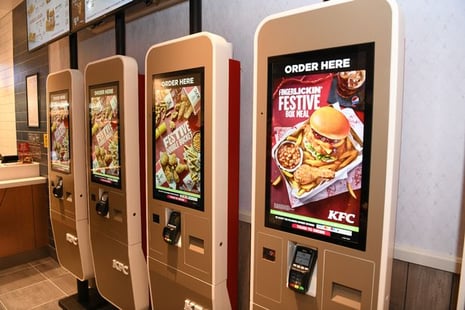Restaurant and food services organizations have adapted their services in recent times by investing in cloud-based restaurant point of sale and its capacity to integrate across locations with emerging technology. A big trend within that has been in POS integrations with mobile and self-serve solutions that allow guests to manage their own orders. This is particularly pertinent in an era of social distancing. But even before that became central to how restaurant and food service organizations engage with guests, the modern restaurant guest sought out channels where they can manage the details of their orders themselves in favor of the traditional staff-operated POS terminal. That trend was driven by how culture and technology converged.
Self-directed ordering is particularly relevant now when minimizing contact is so important to feeling safe and secure when interacting with brands. The organizations that are winning right now are embracing that by giving up control over managing the details of an order and leaving it to those who know about those order details better than anyone – the guests themselves. What kinds of benefits does this trend represent for the restaurant and food service industries in this era of change? What does it mean for organizations ahead in the 2020s? Let’s take a look.
Mobile ordering
Mobile ordering has been on the rise in creating convenient avenues for guests to get what they want with greater control and flexibility, and for restaurants to continue to engage with them in a new paradigm. Leading restaurant chains have taken cues from third-party apps like DoorDash, UberEats, Grubhub, and others to change the nature of food delivery. Yet, according to QSR magazine in April of this year quoting from a Market Force survey, mobile-based pick-up ordering is bringing guests back to the restaurant locations as well. Of those surveyed, 90% visited a drive through during a two-week period as opposed to a 27% relying on traditional delivery services during lockdown conditions.
That means that consumers still want to come to restaurants to get what they want, although they seek to do so on their own terms using personal devices. Guest-driven ordering has led to increased order accuracy, reduced shrinkage, and even higher order values. But guests still need a means to manage orders in a way that helps them feel secure. Restaurants and food services therefore need to invest in a platform to serve that need in the present, also anticipating what an average order process will look like more and more in the future when a reliance on mobile-based, guest-managed orders is very likely to increase.
Self-serve kiosks
When guests feel like they have more control over a process, they feel better about the results, including when they are in-store. Foodtechsolutions.com reports in a November 2019 article that 65% of restaurant customers prefer to use self-serve kiosks to place orders. The technology allows them to take their time, manage their own add-ons, consider upsell prompts, order extra items that they don’t have to feel self-conscious about, and even try menu items they wouldn’t normally consider. Like mobile ordering options, kiosks let them do all this at their own pace without undue pressure or concerns about missing or incorrect items due to miscommunications.
On-site kiosks also reduce necessary face time with staff, an important factor in recent times when establishing social distance has been paramount. With frequent cleaning cycles on high touch surfaces while being a mandate where kiosks are concerned, this does more than empower guests to manage orders themselves. Thanks to increased throughput represented by kiosk technology, it reduces the time they spend in line and in a location, which eases the pressure of strict in-store occupancy on everyone – fellow guests and staff alike.
What is needed to support these trends?
Every guest-facing function of the order process needs a scalable technology foundation to support it. In an industry that’s been shaped so dramatically by recent events, and in one that has been moving toward self-service models for many years, this has never been more important. Expectations around the guest experience are changing. To be resilient, restaurants and food services organizations must change, too.
What else is needed to support scalable change in an era of disruption due to global and economic events? What role does cloud technology play in helping businesses to create the kind of scalability needed to overcome today’s challenges and to be ready for those on the horizon? We have created a resource for restaurant and food services businesses that outlines some of the essential ways that industry leaders are making sure to stay resilient now, while anticipating how to meet future challenges, too.
And, as always, contact ICCG to help provide you with insight and information. Schedule a complimentary consultation to review your questions.


